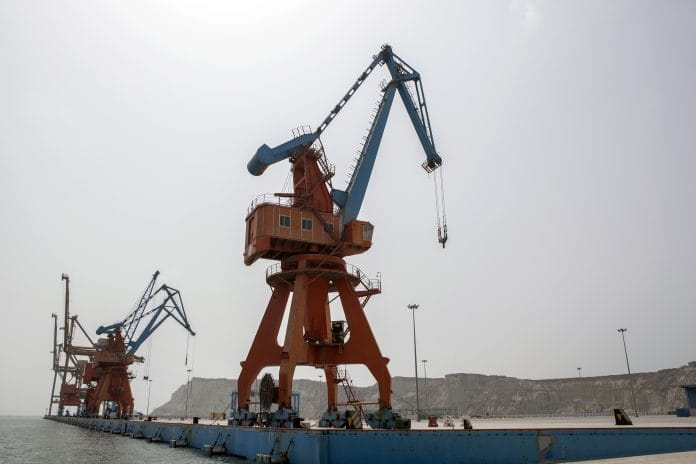The sheer size of the Belt and Road Initiative, often called a trillion-dollar enterprise, has bred paranoia and resentment.
“To get rich, first build a road” is one of those Chinese proverbs that tends to impress foreigners — evoking, as it does, a combination of farsightedness and concern for practicalities. As China is discovering with its globe-spanning Belt and Road project, though, the world doesn’t always play along. The initiative has run into trouble, and its success now depends on revisiting both the vision and the details.
Five years ago Chinese President Xi Jinping began promoting a network of Chinese-financed roads, pipelines, ports, power plants and other infrastructure across Asia, the Middle East, Africa and Europe. Back then, the idea sold itself. China had unmatched skill at building megaprojects, and limitless pools of capital with which to fund them. Host countries, often spurned by the West and its big development banks, desperately needed better roads and other infrastructure to facilitate trade and commerce.
The shine has since come off. Malaysians, for the first time, recently threw out their ruling party because of anger about Chinese encroachment. Strongmen leaders in Sri Lanka and the Maldives have fallen for similar reasons. Malaysia has suspended or cancelled Chinese projects worth more than $22 billion, and Myanmar has severely scaled back a $10 billion port scheme. Thailand and even Pakistan (one of China’s closest allies) have criticized Chinese lending terms.
The sheer size of the Belt and Road program, often called a trillion-dollar enterprise, has bred paranoia and resentment. Host countries fear being sucked into so-called debt traps — especially after China in effect seized a strategically located Sri Lankan port when the island’s government couldn’t service its loan. Opaque deal-making has bred corruption, sometimes on a large scale, and alienated voters. In some countries, an influx of Chinese laborers, businessmen and tourists has aroused complaints of cultural invasion.
At home, the initiative has increasingly assumed a political rather than economic rationale. Knowing that Xi has staked his reputation on the scheme, underlings have approved projects in haste and without coordination. Some may never get built; others have been plagued by construction setbacks and spiraling costs. Many are unlikely ever to make money.
China ought to take stock and adjust its plans. From now on, it should focus on the quality of the projects it’s supporting rather than their scale. This shift will need to come from the top, starting with a push for state-owned banks to partner with international lenders and adhere to their standards. Opening tenders to non-Chinese companies and employing more local workers would cut costs and build goodwill. Providing greater transparency, consulting civil-society groups, and carrying out proper social and environmental assessments of projects would probably slow down approvals — but the delay would be justified if it headed off future problems.
The Asian Infrastructure Investment Bank — which China dominates — has evolved into a well-respected, high-standard lender. There’s no reason China can’t meet global standards in the planning and management of projects. If it did, fewer questionable projects would go forward, and exaggerated fears that the Belt and Road is nothing but a plan to establish China’s hegemony over Eurasia might subside.
The U.S. and its allies have a role to play. Some of China’s projects do pose a clear strategic threat, and intervention in those cases is justified — as when India persuaded Bangladesh not to use Chinese companies to build a deep-water port.
In addition, developed countries could help smaller nations to assess Chinese offers of investment and negotiate better terms. That might mean providing technical assistance to develop higher-quality projects, or creating a multilateral forum to evaluate Chinese bids for their debt sustainability. It could also mean working to strengthen civil society, and to promote democracy, independent courts and a free press, so that citizens can better judge deals for themselves, and hold their leaders to account.
Above all, if the U.S. and others want to contain Chinese influence, they need to provide developing countries with an appealing alternative. The decision to combine various U.S. agencies into a new International Development Finance Corporation will help. Washington ought to collaborate more closely on development initiatives with Japan and other partners. And the U.S. could help itself and developing countries at the same time by doing more to spread the benefits of digital technologies.
China’s Belt and Road needn’t pose a threat and shouldn’t be opposed on principle. Quite the opposite: If China’s investment and expertise succeed in boosting development in poor or unstable regions, the U.S. and other developed nations could benefit too. That’s why Washington’s best course would be to work on strengthening the rules for global trade — so that the goods and services flowing through this new infrastructure are guided by market forces, not political directives. At the moment, of course, the Trump administration is pressing the other way.
To be sure, China’s government isn’t the only one that needs to stop and think. That doesn’t make it any less necessary for Beijing to put the Belt and Road on a smarter and more modest course.– Bloomberg






